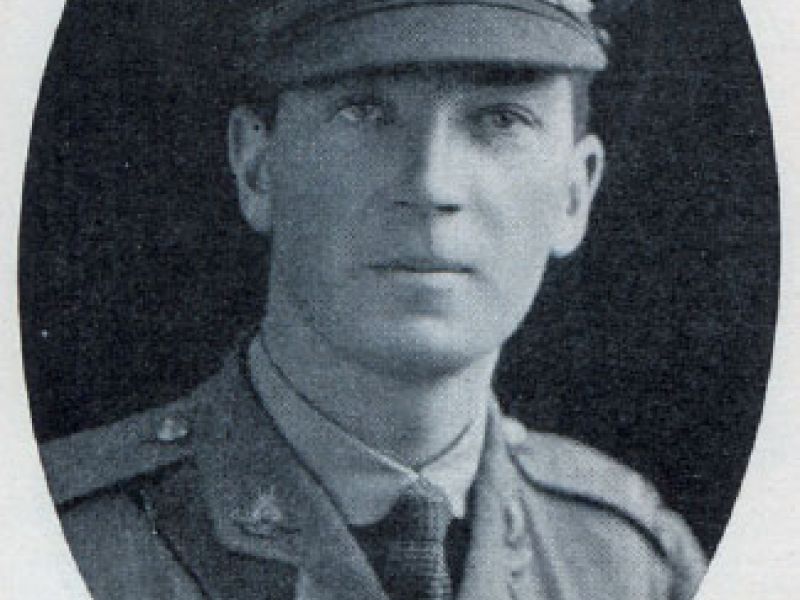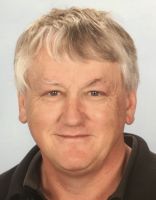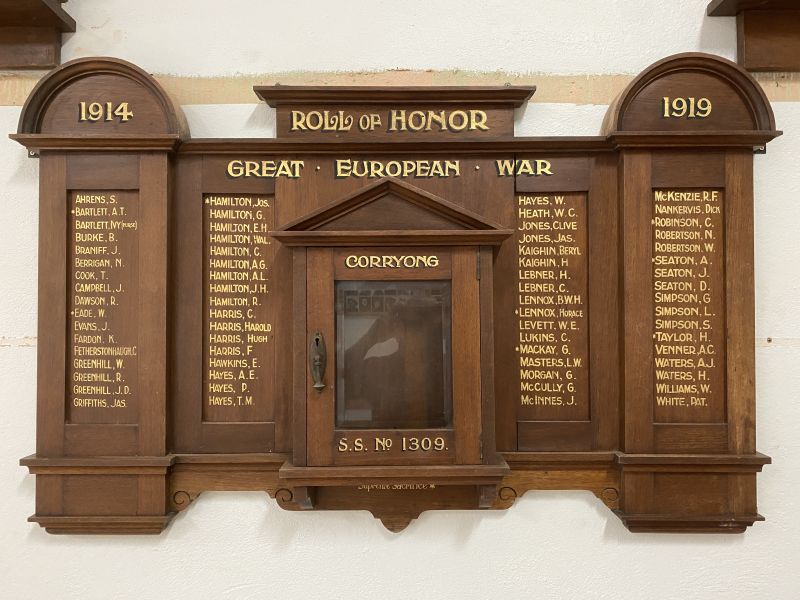David Glenn Mackay
David was born in Corryong in 1888 to James and Annie Glenn (née Hamilton) MacKay. Records indicate that at the time of enlisting in the AIF he also had a sister, Lillian Jean MacKay, and a brother. Although we know that he attended Corryong State School in his younger days, at some time his family moved to Melbourne and lived at 88 Chaucer Street, St Kilda. During the period 1903 to 1905, he attended Scotch College in Melbourne, being a member of the First XI cricket team in 1905.
On the 13th of January, 1915, at the age of 26 years and 10 months, David enlisted in the AIF at Yarrawonga. He was assigned to the C Squadron of the 13th Light Horse Regiment, 4th Light Horse Brigade. At the time of enlisting he was 178 cm in height and weighed 74 kg. He was medium in complexion and had grey eyes and dark brown hair. At the time of enlistment, he recorded his occupation as a bank clerk.
On the 28th of May, 1915, his regiment embarked on HMAT A34 Persic, in Melbourne, bound for Alexandria. On the 4th of September, he was once more on a ship, RMS Megantic, but was this time bound for Gallipoli. During the period of September and October, the 13th Light Horse found themselves on duty around Shrapnel Gully and Lone Pine. On the 10th of November, David found himself suffering from severe gastric problems and was admitted to the 5th Field Ambulance Hospital. This was a problem experienced by many soldiers due to the poor diet and sanitary conditions, not to mention the many unburied corpses that lay bloated in the sun. He rejoined his unit on the 20th of November, just in time for the withdrawal of ANZAC forces from the Gallipoli Peninsula. David spent the next 6 months in Egypt, both at Alexandria and at Tel-el-Kebir, where his unit was attached to the 5th Divisional Cavalry.
Finally, on the 25th of June, his unit embarked on a troopship, heading to Marseilles, where they would join the BEF in France. July the 7th saw him taken on strength with the 1st Anzac Army Corps Light Horse. Over the course of the coming year, he would move from France and England a number of times, attending courses and being promoted from corporal to sergeant.
During the period between the 12th of February 1917 and the 21st of June, 1917 David was posted to the Cadet Battalion in Cambridge, England. Officer Cadet Battalions were formed in early 1916 to provide a four-month course for ex-rankers that had been recommended for a commission. During his time with this Battalion David would have been taught the etiquette and manners associated with having a commission, a process that was often referred to as “gentlemanlification”, rather than military techniques. A belief that was held by the officer class of the British army, although perhaps not the AIF, was that working-class soldiers in the ranks best responded to “upper-class” officers.
On the 6th of July, 1917, David joined the 39th Battalion in France where, two months later, he was promoted to the rank of First Lieutenant. David was with his battalion when they participated in the Third Battle of Ypres (also known as the Battle of Passchendaele). On the evening of the 3rd of October, the 39th Battalion of the 10th Australian Brigade, along with the entire Third Australian Division, assembled just behind their lines in preparation for an attack to gain some high ground known as Gravenstafel Ridge. The rain that had started a few days before would make October the wettest in Flanders for decades. The British artillery bombardment was scheduled to commence at 6 am. The element of surprise that the Australian forces had gained was such that the Germans had planned their own offensive in the same area, for the same day! The German artillery started at 5.40 am, while thousands of German troops were massing behind their own lines.
The 37th Battalion, part of the same brigade as the 39th, met some initial resistance from the attacking Germans, but soon achieved its objective of crossing No Man’s Land. The creeping artillery barrage cleared the way for the 38th, but left the German machine guns, capable of a firing rate of up to 500 rounds per minute. The men of the 39th, including David MacKay and his platoon of infantry, sheltered in the fresh shell holes amongst the mud and carnage, waiting for the barrage to resume. It was during these stages of the battle, amidst the crisscrossing fire from the machine guns in the German blockhouses, that David was wounded in action with gunshot wounds to the face and left foot. His wounds saw him initially transferred to the 11th Field Ambulance unit at Red Farm in France, next to the 44th Casualty Clearing Station at Nine Elms in Belgium, and finally the 53rd Casualty Clearing Station at Bailleul in France.
The 8 Australian Brigades lost a total of 6432 men in that one day. The four battalions of the 10th Brigade lost 914. The 39th Battalion, which started the day with just over 1000 men, lost 210 in one morning. Lieutenant David Glen MacKay was one of those men. On the 5th of October, while at the 53rd Casualty Clearing Station, David died of his wounds. He was buried at the Bailleul Cemetery.
David is remembered at the Australian War Memorial Roll of Honour, and the Corryong War Memorial. For his service during the First World War, he was awarded the 1914 - 1915 Star, the British War Medal and the Victory Medal.

 Stephen Learmonth
Stephen Learmonth